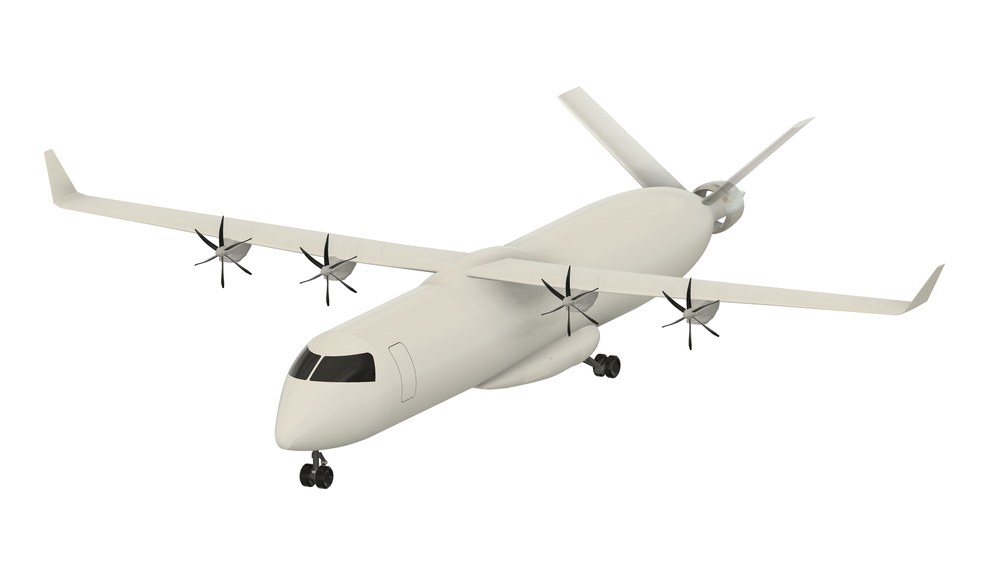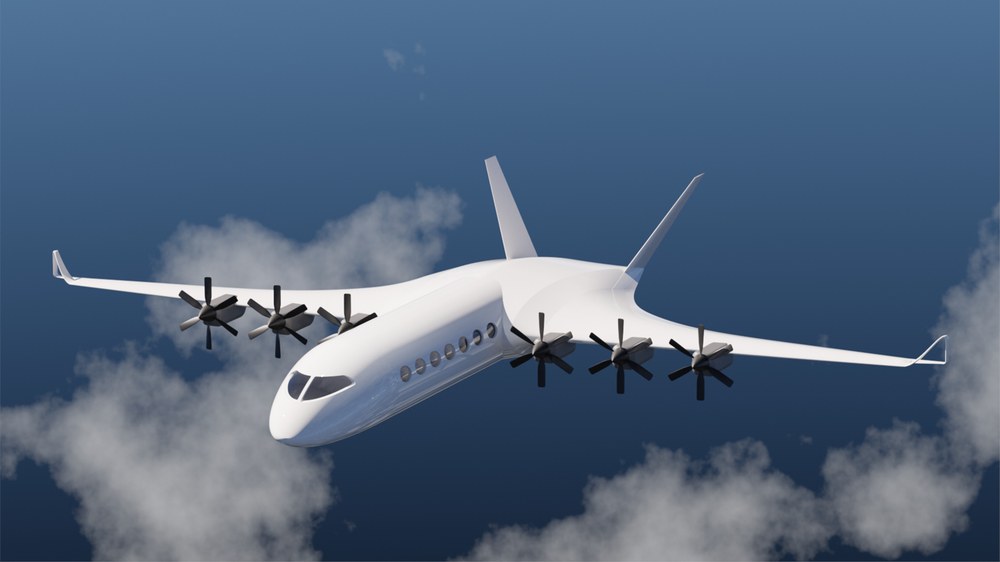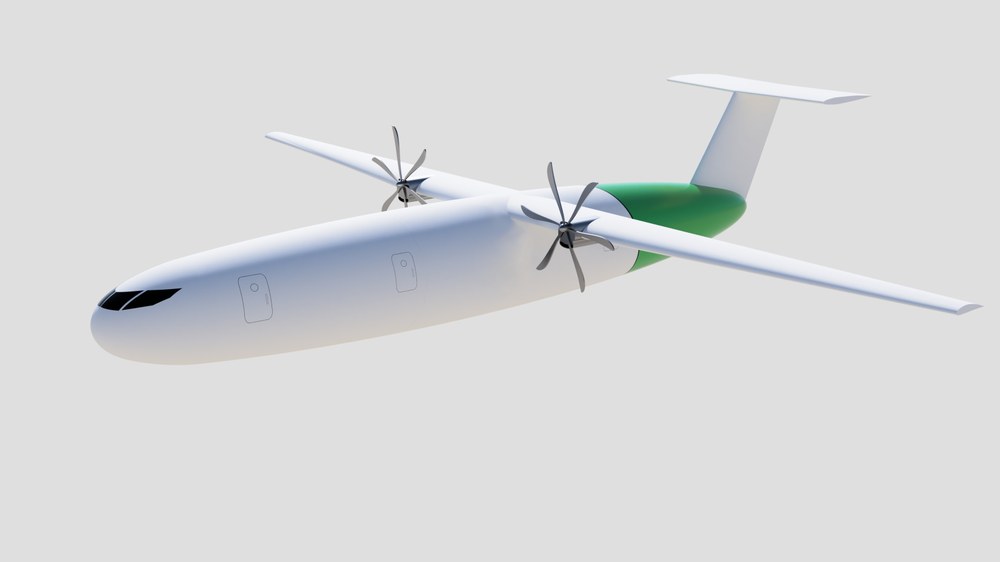DLR awards students for climate-compatible short-haul aircraft


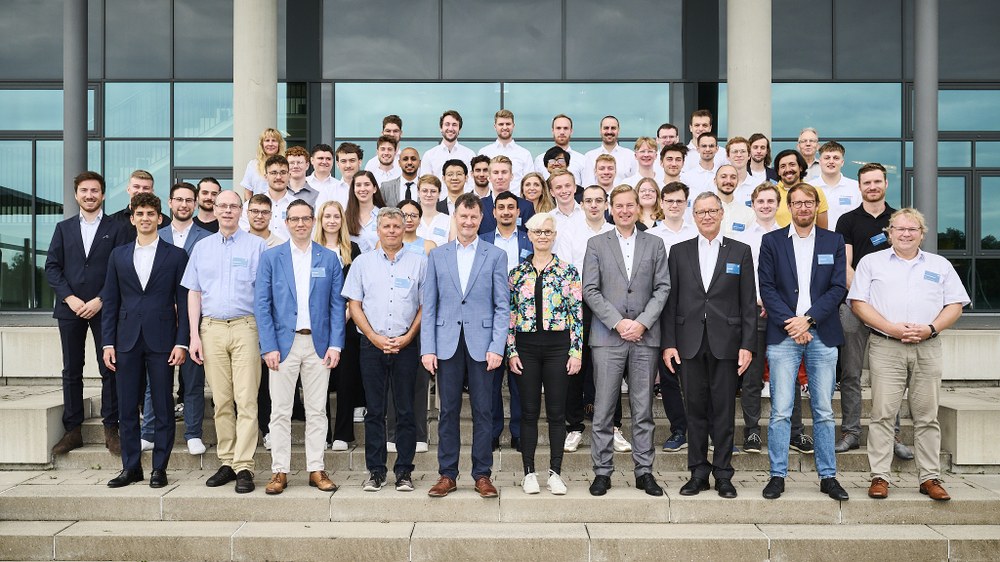
- Students from TU Berlin impressed the jury during the DLR Design Challenge 2024, winning first place with their CHARGE concept.
- The task for this year's Design Challenge was to design a short-haul aircraft that is both climate compatible and economical.
- Focus: Aviation, climate-compatible flying, young talent, digitalisation
During the final event of the DLR Design Challenge 2024, the jury has awarded first place to the TU Berlin student team. The winners prevailed over five other participating teams at the final event on 8 August 2024 at the German Aerospace Center (Deutsches Zentrum für Luft- und Raumfahrt; DLR) site in Hamburg-Finkenwerder.
In order to make air transport climate-compatible in the coming decades, innovative technologies must be advanced. As short-haul flights account for a significant proportion of current carbon dioxide (CO2) emissions from aviation, the DLR Design Challenge 2024 was focussed on addressing this area. The task for participants was to design a low-emission aircraft for future short-haul transportation.
"Aviation is currently undergoing one of the most intensive transformation processes in its history. There is therefore a considerable need for research and development, and DLR sees itself as an architect and integrator of aviation research," emphasises Anke Kaysser-Pyzalla, Chair of the DLR Executive Board. "The exchange of knowledge, new and disruptive approaches and an openness to technology are indispensable for our work. Participants in the DLR Design Challenge 2024 have successfully demonstrated all of this in their designs for an environmentally compatible and economically efficient short-haul aircraft for the year 2050."
Key skills: expertise, creativity and team spirit
Six student teams presented their designs at the final event in the competition, for which they had around four months of development time. The students went through processes similar to real aircraft design: from the initial concept and detailed elaboration and calculation of technical aspects, to the convincing final presentation in front of an expert jury. They gained valuable experience and combined their acquired knowledge with practical skills as they worked under realistic conditions, addressing current challenges in the aviation industry. The task required not only technical expertise, but also creativity and teamwork.
Over the course of the project, the students invested several hundred hours into developing their concepts and will benefit in the long term from the extensive experience and contact with experts in the industry. The Design Challenge was jointly organised by the DLR Institute of System Architectures in Aeronautics and the DLR Institute of Aerodynamics and Flow Technology.
First place in the DLR Design Challenge 2024 went to the team from TU Berlin. Their CHARGE concept impressed the jury with a detailed report in which all design decisions were justified and explained. All of the important areas were comprehensively addressed, and the use of innovative technologies was backed up with solid research. The TU Braunschweig team came second with their VoltAirs-95 concept which particularly impressed the judges with its high level of practicability, striking a good balance between innovation and proven technologies. Third place went to the DHBW Ravensburg team with their HYPER concept. They presented a well-considered design that left few questions unanswered from the jury. Their detailed analysis of the propulsion concept went down particularly well. "Overall, each of the designs submitted were deemed innovative and very creative, meaning that all of the teams are considered winners," said the jury during the award ceremony.
Cutting CO2 with greater efficiency for short-haul routes
One of the requirements for the design of the new aircraft was that it should be operational by 2050, and that it should be able to serve a specified network of European regional routes both ecologically and economically. By analysing the network, participants were left to choose the aircraft's flight range and passenger capacity themselves and thus optimally fulfil both requirements. The choice of energy source was also left open, so teams were free to decide between hydrogen, electricity and sustainable aviation fuel in hybrid operation.
As part of the DLR Design Challenge 2024, the three best-placed teams will present their concepts at the German Aerospace Congress (DLRK 2024) in Hamburg. In addition, the winning team will present its design at the 34th Congress of the International Council of the Aeronautical Sciences (ICAS 2024) in Florence.
A total of 36 students successfully took part in the DLR Design Challenge 2024.
Submitted aircraft designs at-a-glance
First place: TU Berlin with CHARGE

Video: DLR Design Challenge 2024, winning design by TU Berlin – CHARGE
Your consent to the storage of data ('cookies') is required for the playback of this video on Quickchannel.com. You can view and change your current data storage settings at any time under privacy.
TU Berlin/CHARGE
The winning CHARGE (Carbon-neutral High-efficiency Aircraft for ReGional Electric flight) concept combines a 'box-wing' configuration with distributed electric propulsion (DEP) to achieve a high level of aerodynamic and propulsive efficiency. For the energy supply, CHARGE relies exclusively on batteries due to their extraordinarily high efficiency. It is designed to transport 110 passengers over a distance of up to 894 kilometres.
Team: Lennart Wauer, Leonid Wenz, Tim Schulz, Mathias Tekkel, Luca Kriebel and Clemens Ehrich
Second place: TU Braunschweig with VoltAirs-95
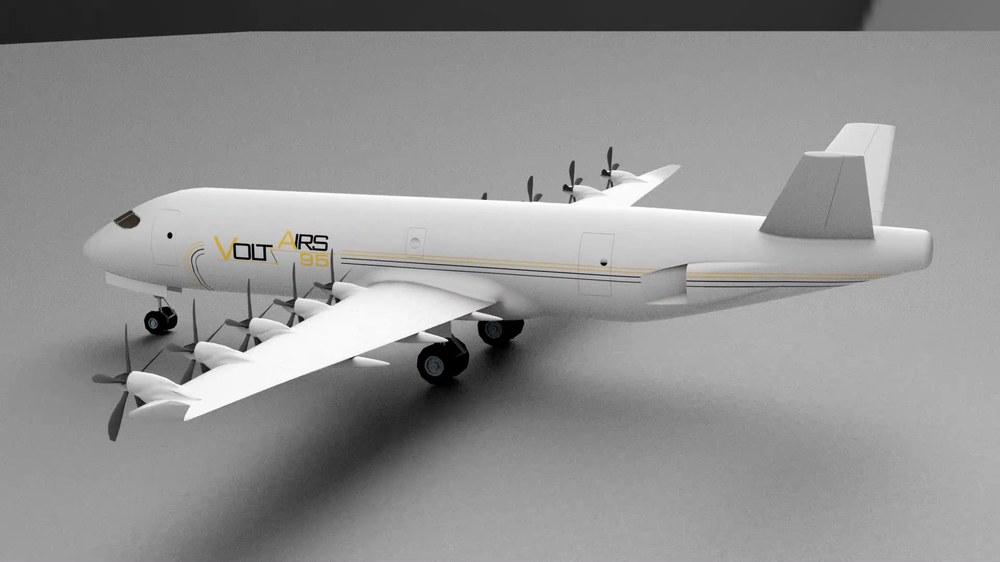
Video: DLR Design Challenge 2024 design by TU Braunschweig – VoltAirs-95
Your consent to the storage of data ('cookies') is required for the playback of this video on Quickchannel.com. You can view and change your current data storage settings at any time under privacy.
TU Braunschweig/VoltAirs-95
The VoltAirs-95 concept was submitted by a team from TU Braunschweig and offers space for 95 passengers. It has a flight range of almost 900 kilometres and is powered by ten distributed electric propellers. An additional rear engine, powered by sustainable aviation fuel (SAF), is available for reserve power or can be switched on for longer flights to more distant destinations. The batteries are housed in the aircraft's fuselage and wings. While the aircraft design is conventional, it features a V-tail. The windowless fuselage is equipped with OLED displays in the cabin to provide passenger comfort while reducing structural weight.
Team: Lukas Thiesen, Gent Gutaj, Anna Vorndran, Aleksandre Kobeshavidze, Christian Dietrich, Mika Rasch
Third place: DHBW Ravensburg with HYPER
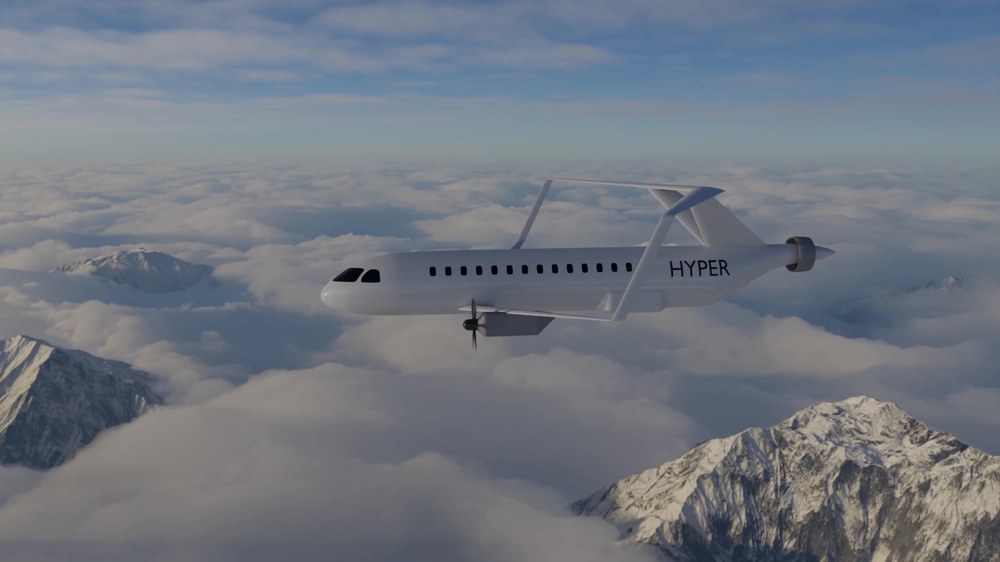
Video: DLR Design Challenge 2024, design by DHBW Ravensburg – HYPER
Your consent to the storage of data ('cookies') is required for the playback of this video on Quickchannel.com. You can view and change your current data storage settings at any time under privacy.
DHBW Ravensburg/HYPER
The HYPER (HYdrogen Powered Electric Regional aircraft) concept is designed to transport 89 passengers up to 1250 kilometres and employs a highly efficient and innovative box-wing design. The electric motors are powered by a hybrid power supply: fuel cells provide energy from liquid hydrogen during cruising, while batteries support flight phases that require higher power. In addition, its propulsion system uses 'boundary layer ingestion' – taking airflow close to the aircraft’s body to generate thrust, thereby further enhancing efficiency.
Team: Jonna Bleeker, Lena Hennige, Niclas Neufeld, Lucas Weser, Julius Wildeboer and Jonas Schaur
Commendation: RWTH Aachen with EcoAir
RWTH Aachen University presented EcoAir, an aircraft capable of carrying 76 passengers over a distance of 900 kilometres. The concept is based on a hybrid-electric propulsion system that uses liquid hydrogen fuel cells and batteries. To achieve a high level of aerodynamic efficiency, EcoAir features folding wingtips that create a large wingspan without compromising its compatibility with airport infrastructures. The wing is also equipped with a 'hybrid laminar flow control system', in which the turbulent boundary layer is sucked through the wing skin to reduce frictional resistance.
Team: Talha Sor, Yuvraj Salhan, Shuhan Yang, Constantin Koopman, Peter Faber and Prakhar Sharma
Commendation: University of Stuttgart with MOBULA
The MOBULA (Modular Blended Wing Body Ultra Low Emission Aircraft) design from the University of Stuttgart combines the aerodynamic advantages of a flying wing with an innovative airport handling process. Designed for 72 passengers and a flight range of 1500 kilometres, its main body can be separated from the wing structure at the airport, speeding up ground handling. MOBULA is powered by six electric propeller motors driven by electricity from a fuel cell and batteries, while hydrogen is stored in two interchangeable tanks at the rear of the aircraft.
Team: Felix Wolf, Lars Wössner, Luka Wolf, Fabian Haas, Felix Fuchs and Arthur Bernhardt
Commendation: HAW Hamburg with HydroProp
Developed by HAW Hamburg, HydroProp is designed for 110 passengers and has a flight range of almost 2000 kilometres. It is based on a conventional design and is powered by two turboprop engines using direct hydrogen combustion, with the hydrogen stored cryogenically. The concept's fuselage is optimised for maximum aerodynamic efficiency and offers passenger comfort despite its windowless design, thanks to its built-in OLED displays.
Team: Aya Yaakoub, Bogdan Atanasoaie, Ilsa Meister, Leon Kaim
Downloads
- DLR-Design-Challenge-2024-Bericht: TU Berlin – CHARGE- 5.7 MB (application/pdf)
- DLR-Design-Challenge-2024-Report: TU Braunschweig – VoltAirs-95- 15.9 MB (application/pdf)
- DLR-Design-Challenge-2024-Report: DHBW Ravensburg – HYPER- 2.6 MB (application/pdf)
- DLR-Design-Challenge-2024-Report: RWTH Aachen – EcoAir- 1.7 MB (application/pdf)
- DLR-Design-Challenge-2024-Report: Universität Stuttgart – MOBULA- 13.6 MB (application/pdf)
- DLR-Design-Challenge-2024-Report: HAW Hamburg – HydroProp- 2.3 MB (application/pdf)

